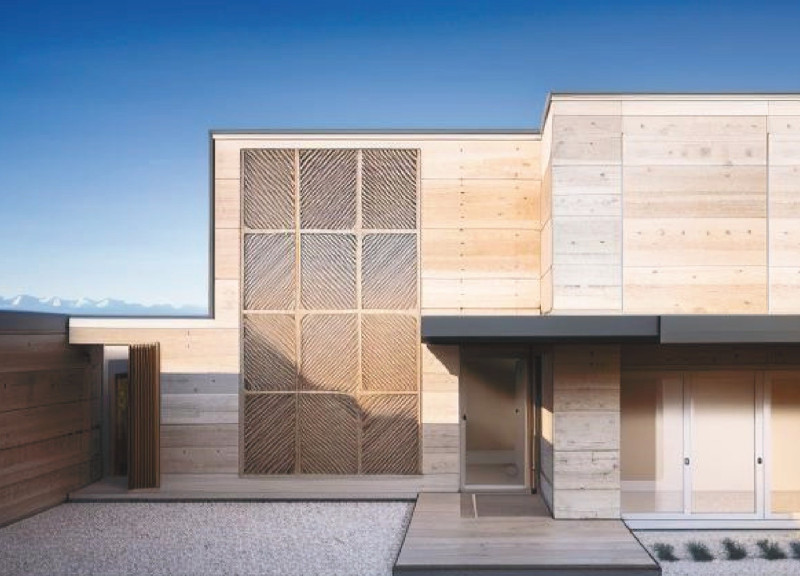5 key facts about this project
At its core, the project is designed to foster connection and interaction, both within its spaces and with the surrounding environment. The layout emphasizes fluid movement, allowing occupants to transition seamlessly between areas designed for work, relaxation, and social interaction. Each space within the project has been meticulously planned to enhance functionality while providing a pleasant atmosphere for users. The careful arrangement of rooms caters to both private and communal activities, enabling a dynamic use of the space.
Materiality plays a vital role in the project’s architectural narrative. The combination of materials such as reinforced concrete, low-E insulated glass, sustainable timber, weathering steel, local clay brick, and natural stone culminates in a design that is not only visually appealing but also environmentally responsible. The choice of materials reflects an intent to harmonize with the local climate and landscape while ensuring durability and a minimal environmental footprint. The extensive use of glass invites natural light into the interior, creating a bright and welcoming environment that reduces reliance on artificial lighting.
The project adopts unique design approaches that speak to both the functionality and aesthetic preferences of its intended users. For instance, integrating green roofs and outdoor terraces allows for the incorporation of nature into the built environment. These features not only enhance the architectural quality of the project but also contribute to its ecological sustainability. Rainwater harvesting systems and energy-efficient technologies further illustrate a commitment to reducing the ecological impact, aligning with contemporary values of responsible building practices.
Additionally, attention to detail is evident throughout the design. Features such as cantilevered structures provide visual interest while demonstrating engineering precision and innovation. The careful selection of textures and finishes establishes a tactile quality that adds depth to the architectural experience. Each element is considered not only for its individual impact but also for its contribution to the overall harmony of the design.
Another significant aspect of the project is its response to local culture and heritage. The use of local materials, alongside design principles that honor traditional architecture, helps to root the project in its context. This sensitivity to place enhances its relevance and resonance with the community, ultimately fostering a sense of belonging for its users.
In summary, this architectural project exemplifies a comprehensive understanding of how design can enhance functionality and promote sustainability. The thoughtful integration of materials, innovative approaches to architectural challenges, and a sincere respect for the surrounding environment and community stand as testaments to its significance in modern architecture. For those interested in delving deeper into the nuances of this project, a thorough exploration of the architectural plans, sections, designs, and ideas will reveal a wealth of insight that enriches the understanding of contemporary architectural practice.


 Erika Zapata Estupinan Hirschmann,
Erika Zapata Estupinan Hirschmann, 























